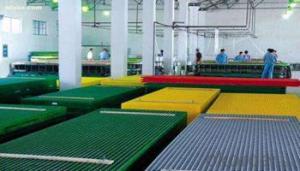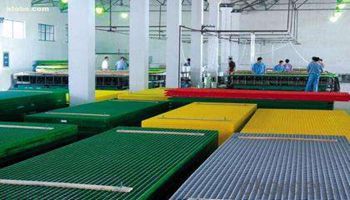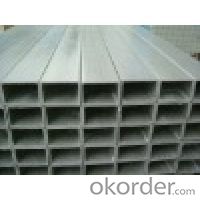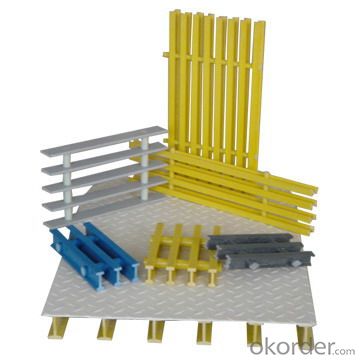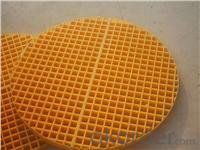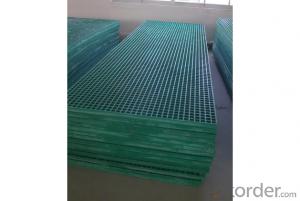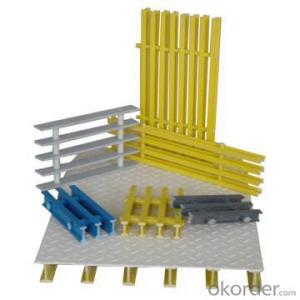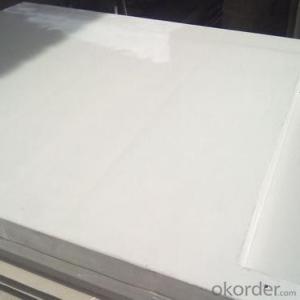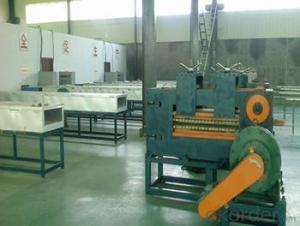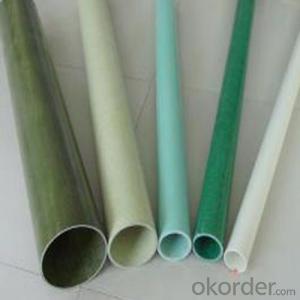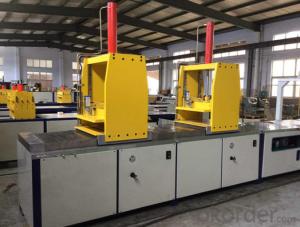UV Resistant Anti-Aging FRP Pultrusion Profiles Grate Plastic Floor Grating Panel
- Loading Port:
- Shanghai
- Payment Terms:
- TT OR LC
- Min Order Qty:
- 50 m
- Supply Capability:
- 90000 m/month
OKorder Service Pledge
OKorder Financial Service
You Might Also Like
Specification
PRODUCT DESCRIPTION
Pultruded grating is made by a particular assembly process, which using “I” shape as its main load-bearing and special rod to go through the bearing bar. Pultruded grating include the standard grating and the custom grating, the custom grating can be designed to meet customer’s requirement or special using condition by changing the shape, size and space of the bearing bars, the surface can be covered with lozenge panel, grit panel, or added the anti-slippery sand directly.
FRP pultruded grating has the most characteristics of molded grating, but it has its distinct advantages, it has very high fiberglass content in the loading direction, so it has very high load capability, it has more superiority when used at wide span, so that the basic support will be decreased and the project cost will be reduced accordingly.
FEATURES
a. Anti-corrosion and anti-rust
b. Light weight and high strength
c. Anti-flammable
d. Anti- fatigue
e. Safe and anti-slippery
f. Anti-ageing
g. Easy of maintenance
h. Excellent electromagnetism property
i. Good economic benefit
SPECIFICATION
Item No. | Height(mm) | Mesh Size(mm) | Standard Panel Size | Open Area | Weight(kg/m2) |
1 | 15 | 38 × 38 | 1220 × 3660 | 72% | 6.00 |
2 | 15 | 20 × 20 | 1247×4047,1007×4047 | 42% | 9.00 |
3 | 25 | 38 ×38 | 997 × 3050 , 1220 × 3660 | 69% | 12.32 |
4 | 25 | 40 × 40 | 1007 × 3007, 1007 × 4007, | 67% | 12.20 |
5 | 25 | 25 × 100 | 1009 × 3007 ,1209 ×3657 | 67% | 13.87 |
6 | 30 | 38 × 38 | 1220 × 3660 , 997 × 3050 | 69% | 14.60 |
7 | 30 | 40 × 40 | 1007 × 3007 , 1007 × 4007 | 67% | 14.28 |
8 | 30 | 20 × 20 | 1000 × 4000,1247×4047 | 42% | 18.10 |
9 | 38 | 38 × 38 | 997 × 3050 , 1220 × 3660 | 68% | 19.71 |
10 | 38 | 25 × 152 | 1226 × 3665 (Bearing bars to run length direction) | 56% | 22.40 |
11 | 38 | 20 × 20 | 1007 × 4007,1247×4047 | 42% | 22.50 |
12 | 40 | 40 × 40 | 1007 × 3007 ,1007 × 4007, 1007 × 4047 ,1247 × 4047 | 67% | 19.87 |
13 | 40 | 20 × 20 | 1247 × 4047 | 42% | 23.70 |
14 | 50 | 50.7 × 50.7 | 1225× 3660 | 69% | 22.17 |
15 | 60 | 38 × 38 | 1220 × 3660 | 47% | 50.43 |
16 | P38 | 38 × 38 | 1230 × 3670 | 68% | 17.5 |
17 | P30 | 38 × 38 | 1220 × 3660 | 69% | 14.0 |
PICTURES
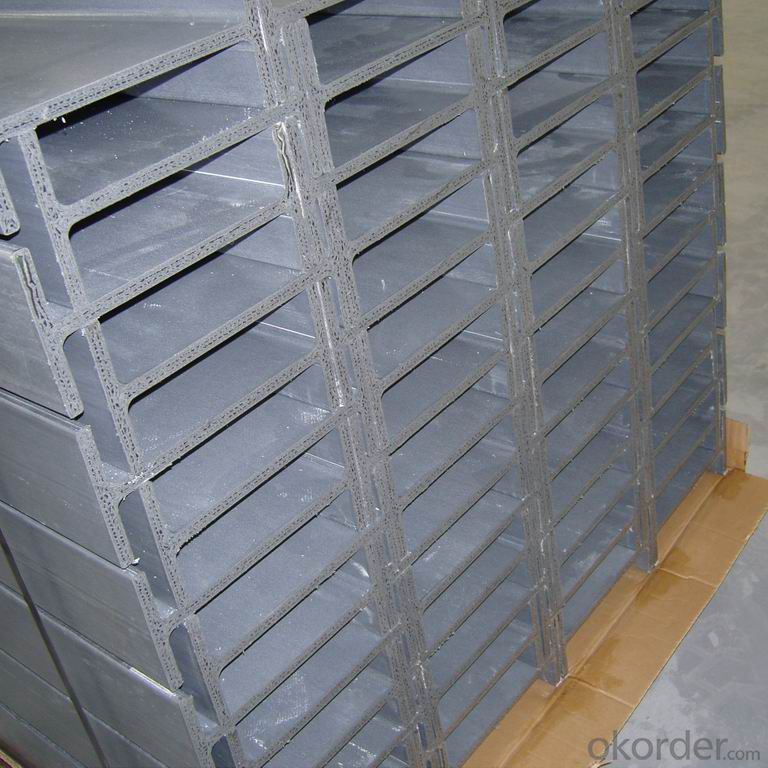
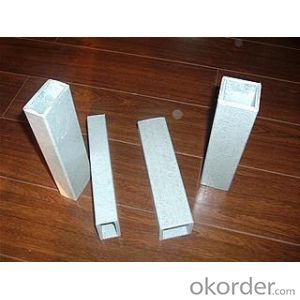
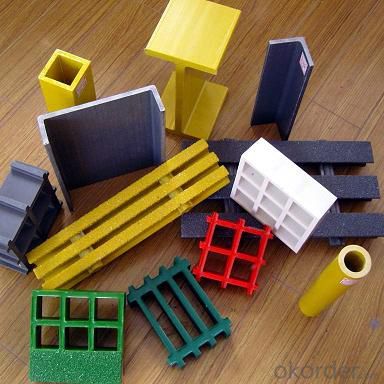
- Q: Can FRP pultrusion profiles be used in the renewable energy and solar power industry?
- Yes, FRP (Fiber Reinforced Polymer) pultrusion profiles can be used in the renewable energy and solar power industry. These profiles offer several advantages such as high strength, durability, corrosion resistance, and lightweight properties, making them suitable for various applications in the industry. FRP pultrusion profiles can be used for structural components, support structures, mounting systems, and other applications in solar panels, wind turbines, wave energy devices, and other renewable energy systems.
- Q: Can FRP pultrusion profiles be used in the mining and mineral processing industry?
- The mining and mineral processing industry can indeed utilize FRP (Fiber Reinforced Polymer) pultrusion profiles. These profiles possess multiple properties that render them suitable for application in this industry. To begin with, FRP pultrusion profiles are characterized by their lightweight yet remarkably strong composition. This quality makes them ideal for situations where weight reduction holds significance, such as in mining equipment or processing plants. Despite their lightweight nature, FRP profiles can endure substantial loads and withstand corrosion. This is particularly advantageous in the mining industry, where equipment is exposed to harsh environments and corrosive substances. Furthermore, FRP pultrusion profiles are non-conductive with exceptional electrical insulation properties. This proves beneficial in mining and mineral processing operations, where electrical safety takes precedence. FRP profiles can be utilized in scenarios where electrical conductivity must be avoided, such as in electrical enclosures or cable trays. Moreover, FRP pultrusion profiles exhibit high chemical resistance, including resistance to acids and alkalis. This renders them suitable for deployment in mineral processing plants, where various corrosive chemicals are employed in mineral extraction and processing. FRP profiles can withstand exposure to these chemicals without deteriorating or sustaining significant damage, consequently increasing their lifespan and reducing maintenance costs. Additionally, FRP pultrusion profiles possess a high strength-to-weight ratio, enabling the construction of durable and lightweight structures. This proves particularly advantageous in mining operations, where structures like walkways, ladders, and platforms need to be installed in challenging terrains. The lightweight nature of FRP profiles facilitates easier transportation, handling, and installation compared to traditional materials like steel. In conclusion, FRP pultrusion profiles offer a viable option for various applications in the mining and mineral processing industry due to their lightweight composition, high strength, corrosion resistance, electrical insulation, and chemical resistance properties. These profiles present numerous advantages over traditional materials, making them a feasible choice for implementation in this industry.
- Q: Can FRP pultrusion profiles be used in the telecommunications and data communication industry?
- Yes, FRP pultrusion profiles can be used in the telecommunications and data communication industry. These profiles offer several advantages such as high strength-to-weight ratio, corrosion resistance, and electrical insulation properties. They can be used for applications such as cable trays, antenna supports, equipment enclosures, and infrastructure components, providing a durable and reliable solution for the industry's needs.
- Q: Can FRP pultrusion profiles be used in electrical or telecommunications applications?
- Yes, FRP pultrusion profiles can be used in electrical or telecommunications applications. FRP (Fiber Reinforced Polymer) pultrusion profiles have excellent electrical insulation properties and are resistant to corrosion, making them suitable for use in electrical and telecommunications infrastructure. Additionally, their light weight, high strength, and design flexibility make them a desirable choice for applications such as cable trays, support structures, and enclosures in these industries.
- Q: Will the FRP section crack for a long time?
- Under normal circumstances, glass fiber reinforced plastic profiles will not appear cracking phenomenon, if there is cracking phenomenon, may be the following reasons:1, the placement method is incorrect, such as irregular, non closed section of a large number of stacked2 、 the resin content in the profile is low, filling is more (see if the section color is whiter, and more powder fall off at the same time)
- Q: Are FRP pultrusion profiles suitable for the manufacturing of boat hulls?
- Boat hulls can be effectively manufactured using FRP pultrusion profiles. These profiles possess numerous advantages that render them perfect for constructing boat hulls. Firstly, FRP pultrusion profiles are not only lightweight but also exceptionally sturdy and durable. Consequently, they are well-suited for boat hulls as their lightweight nature enhances fuel efficiency and enables increased speed. Moreover, their impressive strength-to-weight ratio guarantees that the boat can endure the rigors of the water without compromising its structural integrity. Secondly, FRP pultrusion profiles exhibit exceptional resistance to corrosion. This characteristic is of utmost importance for boat hulls, which are constantly exposed to water, salt, and other corrosive agents. The corrosion resistance of FRP pultrusion profiles ensures that the boat hull remains intact and maintains its performance over time, thus minimizing the need for frequent maintenance and repairs. Furthermore, FRP pultrusion profiles offer great design flexibility. They can be effortlessly molded into diverse shapes and sizes, thereby facilitating customization and optimization of boat hull designs. This flexibility empowers boat manufacturers to create hulls that are both functional and visually appealing. In addition to their strength, durability, corrosion resistance, and design flexibility, FRP pultrusion profiles also possess excellent electrical and thermal insulation properties. These properties are particularly important for boat hulls as they effectively prevent the passage of electrical currents and heat through the hull, thereby ensuring the safety and comfort of passengers and crew. Overall, FRP pultrusion profiles present an outstanding solution for boat hull manufacturing. Their lightweight, robust, and corrosion-resistant attributes, in conjunction with their design flexibility and insulation capabilities, make them an ideal choice for boat manufacturers seeking to produce high-performance and long-lasting vessels.
- Q: Are FRP pultrusion profiles resistant to vibration or shock?
- FRP pultrusion profiles are highly resistant to vibration and shock. The inherent properties of FRP (Fiber Reinforced Polymer) materials make them ideal for applications requiring durability and strength under dynamic loading conditions. The composition of FRP profiles, which typically include a combination of reinforcing fibers and a resin matrix, provides excellent stiffness and damping characteristics. This enables FRP pultrusion profiles to effectively absorb and dissipate vibrations and shock forces, preventing damage or degradation. Additionally, the design flexibility of FRP allows for tailored reinforcement and optimization, further enhancing its resistance to vibration and shock. Therefore, FRP pultrusion profiles are a reliable choice for applications where these properties are crucial, such as in aerospace, automotive, marine, and structural engineering industries.
- Q: How do FRP pultrusion profiles perform in seismic zones?
- FRP pultrusion profiles are highly suitable for use in seismic zones due to their inherent properties and characteristics. One of the key advantages of FRP pultrusions is their excellent strength-to-weight ratio, which allows them to efficiently withstand seismic forces without adding significant weight to the structure. In seismic zones, buildings and structures are subjected to intense ground motions during an earthquake. FRP pultrusion profiles possess high stiffness and strength, enabling them to effectively resist the lateral forces generated by seismic activity. These profiles have a high modulus of elasticity, which allows them to maintain their shape and structural integrity even under extreme seismic loads. Moreover, FRP pultrusions exhibit excellent corrosion resistance, making them highly durable in seismic zones. Unlike traditional materials such as steel or concrete, FRP profiles do not corrode when exposed to moisture, chemicals, or salts, which are commonly found in seismic regions. This corrosion resistance ensures the long-term performance and structural integrity of FRP pultrusion profiles, even in harsh environmental conditions. Another advantage of FRP pultrusions in seismic zones is their flexibility and ability to dampen vibrations. During an earthquake, the ground motions cause structures to vibrate. The inherent damping properties of FRP materials help absorb and dissipate these vibrations, reducing the potential for structural damage. Additionally, FRP pultrusion profiles can be designed and manufactured to meet specific seismic requirements and codes. They can be reinforced with additional layers or designed with specific geometries to enhance their seismic performance, ensuring that they meet the necessary safety standards in seismic zones. Overall, FRP pultrusion profiles offer numerous benefits for use in seismic zones. Their high strength-to-weight ratio, corrosion resistance, damping properties, and design flexibility make them an excellent choice for constructing seismic-resistant structures while ensuring durability and safety.
- Q: Can FRP pultrusion profiles be used in the construction of theme park rides?
- Yes, FRP pultrusion profiles can be used in the construction of theme park rides. FRP (Fiber Reinforced Polymer) pultrusion profiles are known for their high strength-to-weight ratio, corrosion resistance, and durability, making them suitable for various structural applications. These profiles can be used to build ride components such as supports, beams, frames, and safety structures, providing a lightweight yet robust solution for theme park rides.
- Q: Can FRP pultrusion profiles be used in the construction industry?
- Yes, FRP pultrusion profiles can be used in the construction industry. FRP (Fiber Reinforced Polymer) pultrusion profiles offer several advantages such as high strength-to-weight ratio, corrosion resistance, and durability. These profiles can be used in various construction applications such as structural support systems, window and door frames, bridge components, and building facades. They provide a lightweight and cost-effective alternative to traditional construction materials like steel and concrete.
Send your message to us
UV Resistant Anti-Aging FRP Pultrusion Profiles Grate Plastic Floor Grating Panel
- Loading Port:
- Shanghai
- Payment Terms:
- TT OR LC
- Min Order Qty:
- 50 m
- Supply Capability:
- 90000 m/month
OKorder Service Pledge
OKorder Financial Service
Similar products
Hot products
Hot Searches
Related keywords
